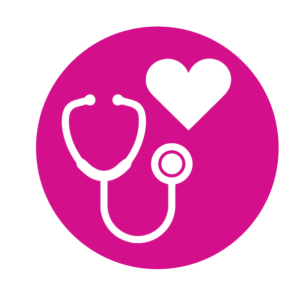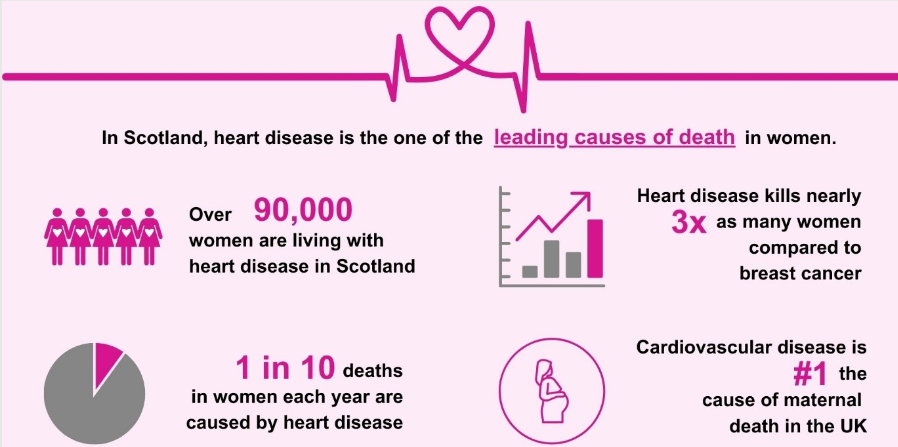After reviewing the results with Rebecca and Andrew, the healthcare provider goes on to discuss the recommended next steps. It is explained to them that spontaneous coronary artery dissection (SCAD) is an uncommon heart condition, and it is not something that Rebecca could have predicted or prevented.
Therefore, the healthcare provider advises conservative management for Rebecca at this point in time.
- Conservative management = A type of medical treatment defined by the avoidance of any invasive measures such as surgery.
- Unless the affected coronary artery is blocked (occluded), current evidence suggests it is better not to perform surgery or an angioplasty (dilation of a narrowed blood vessel, using a balloon, inflated at the affected site) for SCAD.
Rebecca is shocked by the results of her angiogram and Andrew is frustrated that Rebecca wasn’t offered cardiac surgery, or another medical intervention. However, the healthcare provider reassures them both and explains that because SCAD is like a bruise, it can and will heal over time (around 2-6 weeks).
The healthcare provider moves forward by referring Rebecca to be reviewed by the cardiology team.
For more information on SCAD visit CHSS Resources Hub: Spontaneous Coronary Artery Dissection (SCAD)
Spontaneous coronary artery dissection (SCAD) is an emergency condition where there is a tear in the wall of a heart artery. As a result of the damage to the heart artery, blood cannot get to the heart properly. If not treated promptly, SCAD can lead to a heart attack (myocardial infarction), heart rhythm problems (arrhythmia), or cardiac arrest.
Click on the categories below to learn more about SCAD:
Isla and her healthcare provider discussed a treatment plan to keep Isla’s risk for cardiovascular disease low. They also agreed on what contraception option is most suitable for Isla at this point in time.
Isla agrees to make changes to her diet by reducing the number of takeaways she gets and eating more balanced, healthy food. She also agrees to start exercising and expresses interest in taking exercises classes. She plans to join her local gym where they offer Yoga and Pilates classes.
Isla will get an appointment to have her copper coil intrauterine device (IUD) inserted. Until then, she will use condoms and have a sexually transmitted infection (STI) health check done.
Isla schedules a follow-up appointment in 6 months’ time to see how she is doing with her exercise and diet changes, have her blood sugar (glucose) checked again through an HbA1c (glycated haemoglobin) test, and see how she is doing with her copper coil IUD.
How to find Services and Information near you:
- Find a GP near you:
- Find a pharmacy near you:
-
-
-
On the other hand, there are risk factors within an individual’s control (modifiable).
Examples of these include smoking status, diet, body weight, physical activity levels, blood pressure, cholesterol levels, and diabetes management.
Please click on the different modifiable risk factors listed below to learn more about them.

Chest Heart & Stroke Scotland offer many options to help both health professionals and the general public support heart health in women.
Action to help improve heart health in women can also be taken by . Members of the general public, especially women, have the power to make a positive difference.
If you are a member of the general public and/or a woman, examples of actions you can take include:
Morag returns for another visit with her healthcare provider to go over the results from her last visit and discuss what they mean.
Results from Questions Asked
The notable results from the questions Morag was asked by her healthcare provider were:
- Her last menstrual period was 4 years ago, she has not experienced any bleeding after sex (post-coital bleeding), and she is not using a form of contraception.
- She has not had a hysterectomy and she has no personal or family history of breast, ovarian, or uterine cancer.
- Morag is up to date on her smear tests (cervical cancer screening) and mammograms (breast cancer).
- She reports a family history of cardiovascular disease as her father had a heart attack (myocardial infarction) at 64 years old. Morag indicated that her father recovered well and is now in his early 80s.
- Morag smokes up to 20 cigarettes per day on average.
- She eats a diet high in salt, carbohydrates like white pastas, breads, and rice. She does not eat the recommended amount of fruit and vegetables.
- She drinks about 10 units of alcohol per week.
- She doesn’t exercise, but she notes she is very active from looking after and playing with her grandchildren and from the physical labour of her cleaning job.
The following results are from the examinations done:
Test what you’ve learned so far by answering the questions below.
Choose your answer and click submit to see if it is correct.
Please go through the slider below to learn about symptoms of cardiovascular disease in women.
Please click the arrows at the bottom right of the slide to expand the page.

Heart disease in women
Heart disease is the general term for conditions affecting the heart including coronary artery disease, arrhythmia, and heart failure.
- Significant morbidity = having serious/chronic illness, impairment, or decline of health that affects an individual’s quality of life and life expectancy.
Statistics about heart disease in women:

Despite the prevalence and impact of heart disease in women, it is often misconceived as primarily affecting men. As a result:
- Women are less likely than men to be prescribed drugs that reduce the chance of having a second heart attack.
- Women are less likely to receive diagnostic testing, such as a coronary angiography imaging, within 72 hours of hospital admission.
- Compared to men, women are less likely to be invited to / participate in medical trials and research
Why this module was created
The above information points to the need for increased awareness, appropriate education, and access to quality healthcare for sex-specific differences in heart disease. The Scottish Government acknowledges this in their Women’s Health Plan as does CHSS’ Women’s Health Action Plan.
This eLearning module is a response to this critical need for awareness and education surrounding women’s heart health in Scotland. This resource aims to empower health professionals to deliver more tailored and effective care to women and the public to actively participate in caring for their cardiovascular health. To do so, the module provides evidence-based information about signs and symptoms, risk factors, preventative measures, and more to heart disease in women.



